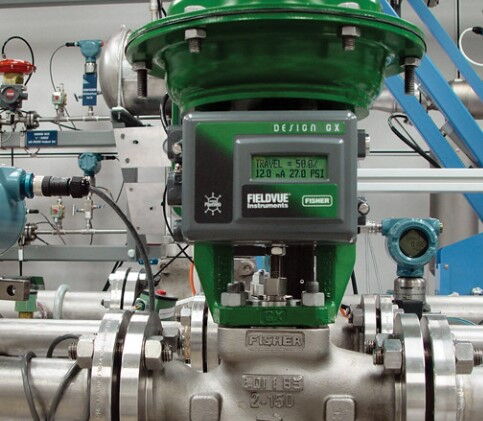How to Improve Control Valve Response Time?
In process control, the response speed of control valves is super important for how well the system works, especially in areas like automation, regulation, and precise control. The faster the valve reacts to changes in signals, the better the control over things like flow, pressure, and temperature. Optimizing the response time of control valves is crucial for making sure everything runs smoothly and accurately.
Control valve response time is the amount of time it takes for a valve to react to a signal change, from the moment it gets the signal to when it reaches the desired position. The quicker a valve responds, the better the control system can handle changes and maintain stability. If the valve response time is too slow, it could mess with the accuracy of the process. Response time is made up of static time, dynamic time, and dead band time, and dead band time is a big factor in how quickly the valve reacts.
Here's a breakdown of what makes up response time.
Static Time: This is the time it takes before the valve starts moving after getting the signal. It's usually caused by delays in the control system or other system-related issues.
Dynamic Time: This is how long it takes the valve to move and get to 63% of its final position. The actuator's performance mainly determines this time.
Dead Band Time: This is the time when the valve just sits there and doesn't react. This can be a big issue if you're trying to control small changes. Reducing dead band time is key to faster response.
T63 time is a really important measure of control valve response speed. It tells you how long it takes for the valve to reach 63% of its final position after receiving a signal. The shorter the T63 time, the faster the valve reacts, which leads to more precise control of the system.
T63 vs. Dynamic Time: Dynamic time is the time it takes for the valve to get to 63% of its final position, and it's influenced by how the actuator works. Matching the valve and actuator properly is crucial for optimizing T63 time and ensuring smooth system performance.
Dead band can cause delays in the valve's reaction to small signal changes, making control harder. It's often caused by things like friction in the valve or actuator or poor design choices. The longer the dead band, the worse the system will perform. So, reducing dead band is a must to improve how quickly the valve responds.
Fix Valve Seals and Parts: Minimize friction and avoid designs that lead to delays.
Improve Actuators and Positioners: Better-designed actuators and positioners help reduce dead band and improve response speed.
Use High-Gain Positioners: These types of positioners can help reduce dead band and make the valve more precise and quicker.
The actuator is a key part of how fast a control valve reacts. The size, air pressure, and materials used all impact the response time.
Actuator Size: Bigger actuators usually take longer to respond because they need more air to move.
Air Pressure: Higher air pressure helps the actuator respond faster, but too much pressure can cause instability, so it needs to be balanced.
Friction: Friction inside the actuator can slow things down and cause delays. Minimizing this helps improve the valve's reaction time.
Piston Actuators: These can produce more force and are good for handling bigger flows, but they usually have higher friction and slower response times.
Diaphragm Actuators: These have less friction, so they tend to have faster response times, especially for smaller adjustments.
The positioner, which converts the control signal into valve movement, plays a big role in how fast the valve responds. A positioner's sensitivity and gain directly affect the valve's speed.
Gain: Higher gain means the valve will respond faster to changes. It helps the valve track the control signal more accurately.
Air Supply Pressure: Changing the supply pressure can affect how well the positioner performs. Too high or too low can throw things off, so it's important to get it right.
Increase Gain: A higher gain reduces dead band and improves accuracy.
Choose the Right Air Pressure: The right pressure ensures the positioner works efficiently and provides consistent performance.
If you want to make sure your control valve is quick to respond, there are a few steps you can take to reduce its response time.
Cut Down on Dead Band Time: Improve valve seals, reduce friction, and use high-gain positioners to minimize dead band time and get faster response.
Match Actuators and Positioners: Make sure the actuator and positioner are well-matched to optimize the system's performance and reduce response time.
Pick the Right Valve Design: Choose the valve design that suits your specific needs. This will help ensure it reacts quickly and accurately.
The speed at which a control valve responds is critical in process control systems. By optimizing the valve design, actuator performance, positioner settings, and dead band, you can significantly improve how quickly the valve reacts to signals. This leads to more precise and stable control of industrial processes, helping everything run more efficiently. Keep all these factors in mind to make sure your system stays responsive and accurate.

